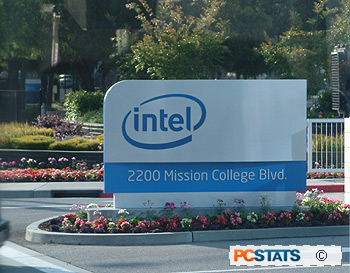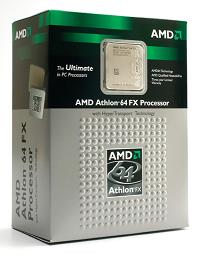Once again it's time to get
into the boxing ring for another battle of
AMD vs. Intel! And despite
the strong opinions this editorial is likely to stir up, I always appreciate hearing back from you. I'm sure plenty of people will
disagree with my take on the processor industry, but hey that's why I'm the tech
analyst!
With that in mind, it's time
for some up to the minute commentary on the state of the computer world. The AMD
vs. Intel battlefront has changed dramatically over the last three years, and
like you, I have gone the path that most enthusiasts have. I want the best
performance for my hard earned cash, so I choose the fastest available hardware
without really considering who manufacturers the parts... after all, does it
really matter who makes the fastest CPU?
Age has
mellowed my thirst for speed, and my upgrade schedule has
slowed to a yearly pace, but that doesn't mean I'm settling for any less.
To fit into this leisurely schedule I've had to focus a bit more on evolving technologies,
and do my best to avoid the lemons (hello RDRAM!?) and technological evolutionary branches
which aren't going anywhere... say for example ATI's
Crossfire.
Here's how it all plays out in five easy
steps.
Step 1: It's the Performance, Stupid!
There's
little doubt that AMD's K8 Athlon64 processor is currently
the fastest architecture available. The Athlon64 architecture is superior to Intel's
Netburst (the architecture that drives the Pentium 4) in every
which way, and Intel's band-aid fixes have not been enough to keep up with
the perpetual underdog from Austin. It's true that Intel does have a real winner
with its Pentium M and Pentium III pedigreed Core Duo, but these are primarily mobile CPUs,
and consequently beyond the scope of what I'll be speaking on.
 What was
it that happened to so dramatically shift the position between Intel and AMD's
processors?Why is Intel faltering on the
desktop front and AMD winning the hearts and minds of geeks world wide? It
certainly isn't for lack of advertising, but that's another story.
What was
it that happened to so dramatically shift the position between Intel and AMD's
processors?Why is Intel faltering on the
desktop front and AMD winning the hearts and minds of geeks world wide? It
certainly isn't for lack of advertising, but that's another story.
The real
reason for all of this upheaval
and change is Intel's Netburst architecture. It was supposed to last for
10 years when it was introduced in 2000, however that lifespan was cut short in
2003 when Intel struggled so publicly with the Prescott core. The initial product
was full of kinks, its performance was lousy, it suffered from voltage leakage,
and it was pretty obvious that many of its faults were due to the way
Intel "improved" its processors from one speed generation to the next. The days
of the good old die shrink and ramp up are certainly dead now.
After
some initial questions to the necessity of a 64-bit processor in a
32-bit world, AMD's Athlon64 processor was well on its way to becoming the
sweetheart of computer geeks. It's efficient core architecture allows the Athlon64 to handle more
work per clock cycle than the Pentium 4/D (which was also the
case with AMD's previous generation), so more gets done with less so to
speak.
 Intel's
wildcard has always been its
special CPU SSE series instructions, but that advantage has also dwindled away.
While AMD's parts often do not support the latest Intel instructions at
the time of introduction, the company does tend to integrate them in
time to coincide with the release of software that uses these new features. In
fact, if you look at the enhanced instruction sets in the latest AMD Athlon64
processors, you'll notice that it supports more instructions than an equivalent
Intel Pentium 4 processor!
Intel's
wildcard has always been its
special CPU SSE series instructions, but that advantage has also dwindled away.
While AMD's parts often do not support the latest Intel instructions at
the time of introduction, the company does tend to integrate them in
time to coincide with the release of software that uses these new features. In
fact, if you look at the enhanced instruction sets in the latest AMD Athlon64
processors, you'll notice that it supports more instructions than an equivalent
Intel Pentium 4 processor!
Perhaps
Intel's one saving grace is that the Pentium 4/D can still overclock
quite well, with a little inventive cooling it will achieve frequencies that AMD users
can only reach with extreme cooling. Realistically though as nice as the round
numbers are, these are empty goals. An Athlon64 may be clocked
a whole gigahertz slower than a Pentium 4, but it still performs much better in
benchmarks; the correlation between frequency and performance is pretty much
dead.
On the horizon, Intel's
upcoming 'Conroe' core is starting to look like it might give AMD a run for its
money, but it's not available yet so comparing it with current technology is not
appropriate.

